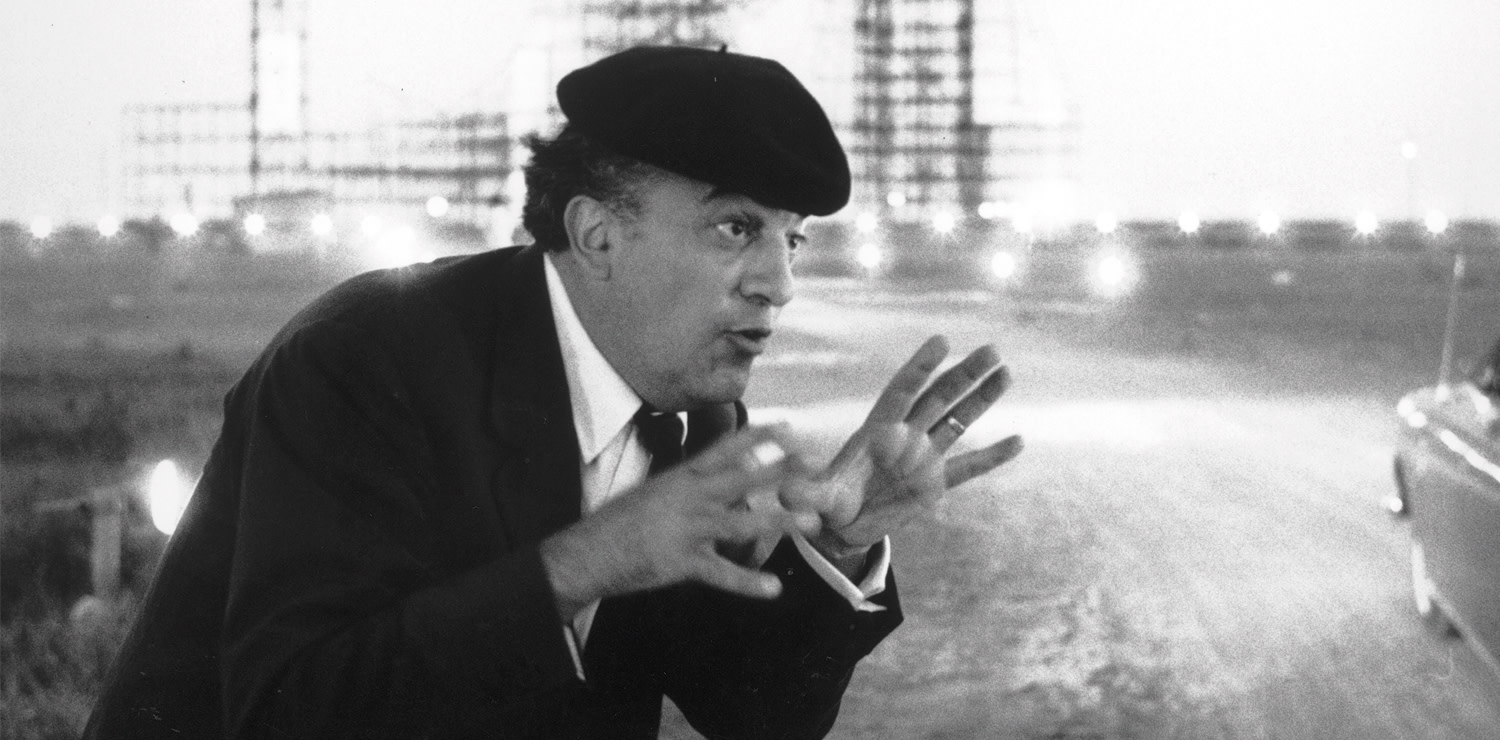Fellini’s 100th Anniversary
A tour of the great director’s Rome
“I don’t want to prove anything, I just want to show”. This is the motto Federico Fellini, one of the greatest film directors of all time, lived and worked by his whole life. January 20 marks the 100th anniversary of Fellini’s birth, and such a significant anniversary cannot go unmarked. Rome, the Maestro’s city of adoption, the city he described over and over again in his films challenging cinema’s aesthetic cannons, will celebrate in grand style.
His was a unique vision, mixing visionary and hyperrealist elements together, even grotesque and tragicomic now and then. Among Fellini’s first films, The White Sheik starring Alberto Sordi, and I Vitelloni, considered to be one of his masterpieces. International success, however, came with La strada, shot in 1954 and which won the Academy Award for Best Foreign Language Film in 1957, Fellini’s first Oscar-winning movie. In 1960, La dolce vita was awarded at the Cannes Film Festival and won the Nastro d’argento and David di Donatello prizes. And, just to mention a few more of Fellini’s films, Nights of Cabiria, 8½, Amarcord, which all won the Academy Award, Roma, a semi-autobiographical film in which Fellini played himself, and finally The Voice of the Moon, starring Benigni and Villaggio, Fellini’s so-called “spiritual testament”.
On the occasion of the 100th anniversary of his birth, follow us on a tour of Federico Fellini’s most memorable locations in Rome, both professional and private. Let’s start from the most iconic scene of La dolce vita, the one in which Anita Ekberg, who plays the beautiful Sylvia, wades into the waters of the Trevi Fountain, inviting Marcello Rubini- Marcello Mastroianni to join her. Other famous locations in the film are Via Veneto, where all the socialites and celebrities of the time used to gather; Piazza del Popolo, where the air was filled with the scent of decadence of the class of intellectuals, artists, filmmakers, aristocrats and bourgeois; whereas for the scene in which Marcello and Sylvia dance and get to know one another, the Baths of Caracalla were recreated in a studio.
Instead, in the Nights of Cabiria, the real Baths are the place where the sweet and naïve streetwalker Cabiria- played by Giulietta Masina, Fellini’s wife - and her “colleagues” wait for their clients, in contrast to the glamorous atmosphere surrounding Via Veneto’s prostitutes.
Roma’s most famous scene, the one in which a prostitute rises amidst busts and pieces of columns, takes place in the Tomb of Caecilia Metella, which can be seen also in the long shot on the motorway leading into Rome, whose chaotic traffic ends at the Colosseum, visible again in the final sequence of the film, with a procession of motorcyclists speeding past the city’s principal monuments from Castel Sant’Angelo. Roma’s filming locations include Piazza di Spagna, where a group of hippies scatters across the Spanish Steps; the Termini train station, where the adventure of the young Fellini begins; Foro Italico and the Trastevere neighborhood. Piazza Santa Maria in Trastevere is the background of the scene in Woody Allen’s To Rome with love based on The White Sheik. The two young newlyweds in Fellini’s film - Oscar (Leopoldo Trieste) and Wanda (Brunella Bovo) - arrive in Rome and stay at Albergo Tre Fiori, on Via Sistina, which was actually Hotel Ginevra on Via della Vite. However, the film’s most significant shooting location is Via 24 Maggio, where Wanda is supposed to secretly meet with the soap opera photo strip star she is obsessed with, the Sheik (Alberto Sordi). The film’s final sequence takes place in Piazza San Pietro, where Oscar and Wanda reconcile.
Not many are aware of this, but Fellini chose the setting of the EUR neighborhood, which he was very fond of, for one of his lesser-known films: Le tentazioni del Dottor Antonio, the second episode of Boccaccio ’70. Now let’s leave Fellini’s filming locations to visit the places of his life. First of all, speaking of cinema, the Cinecittà studios where, by going on the Cinecittà si Mostra tour, visitors can see the legendary Teatro 5, Fellini’s favorite set, and the famous Venusia head, a sculpture created for Fellini’s Casanova, as well as a room entirely dedicated to Fellini, including filmed sequences, original costumes, sketches and photos.
In Rome, Fellini lived in an apartment on Via Margutta, a fact acknowledged by a plaque on the building’s façade. His studio was on Corso Italia and his three favorite restaurants were: Cesarina on Via Piemonte, where Fellini held the launching of La dolce vita as payback for the many free meals he had enjoyed as a young man; Al 59, on Via Brunetti 59 serving also Emilian cuisine, including Tortellini del Maestro, paired with a glass of whiskey as Fellini used to do; and Dal Toscano on Via Germanico, best-known for its barbecued meat.
Our final stop is at Bar Canova on Piazza del Popolo, the film director’s favorite café in Rome. Inside, there is a wall dedicated to Fellini, covered with his sketches, drawings and photos.









